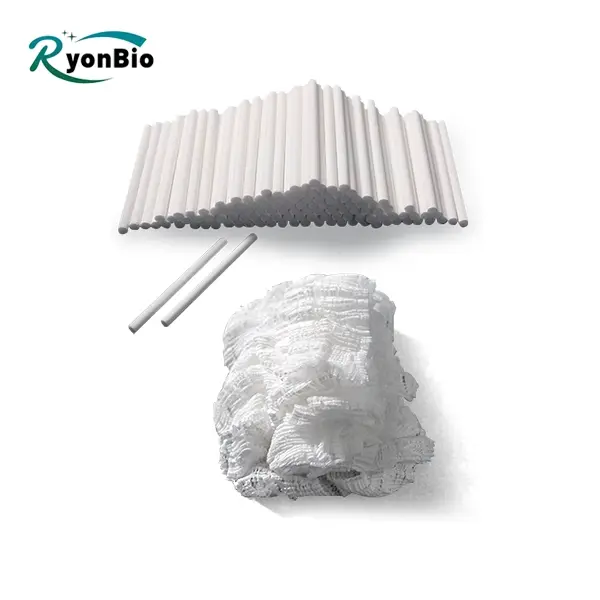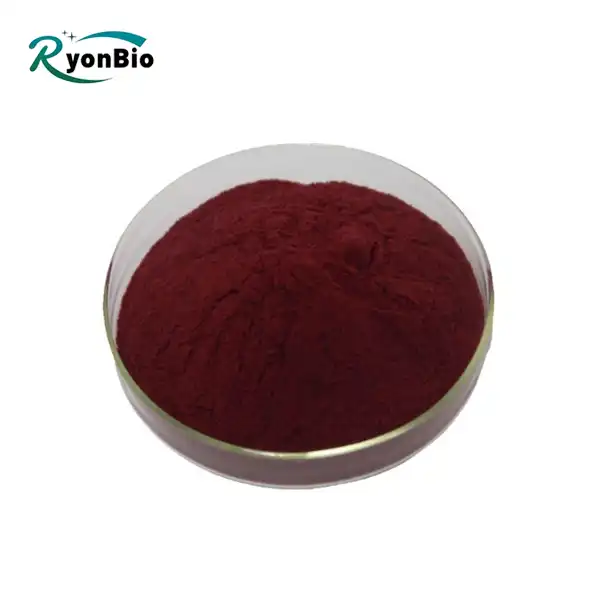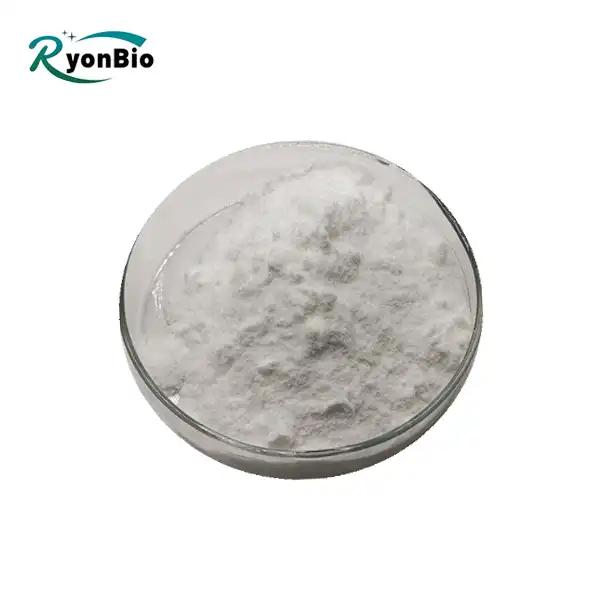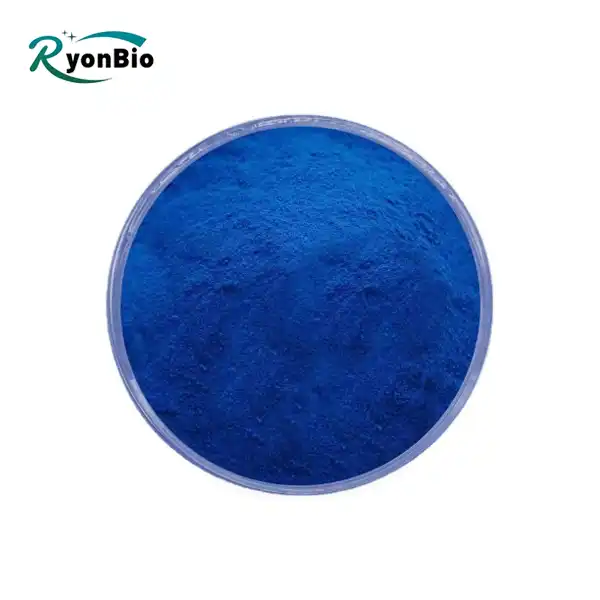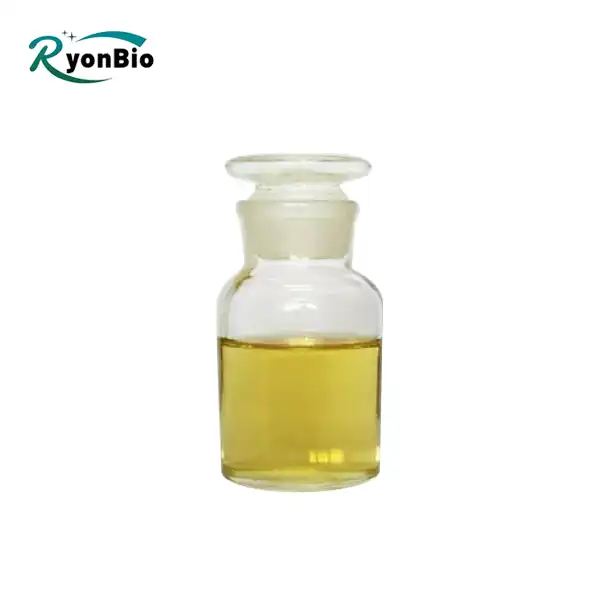Ursodeoxycholic Acid (UDCA) is a medication primarily used to treat certain liver diseases. It is widely known for its therapeutic effects on conditions such as primary biliary cholangitis (PBC) and gallstones. UDCA works by reducing the amount of cholesterol produced by the liver and by dissolving cholesterol in bile, which helps prevent gallstone formation and improves liver function.

How Does Ursodeoxycholic Acid Powder Improve Liver Function?
Ursodeoxycholic acid (UDCA) has been extensively researched for its profound impact on liver function improvement. A primary mechanism by which UDCA enhances liver health involves its ability to stimulate the secretion of bile acids that are less harmful to liver cells. This is particularly beneficial in conditions such as primary biliary cholangitis (PBC), where UDCA is pivotal in slowing disease progression and preserving long-term liver function. Research has consistently demonstrated UDCA's capacity to reduce markers of liver inflammation and fibrosis, which are crucial in averting advanced liver damage and cirrhosis.
Moreover, Ursodeoxycholic Acid Powder exerts a protective effect against liver cell damage induced by toxic bile acids. By modulating the composition of bile acids and promoting bile flow, UDCA contributes to the maintenance of liver cell integrity. This supports their pivotal role in detoxification and metabolic processes essential for overall liver function. The multifaceted benefits of UDCA underscore its significance as a therapeutic agent in hepatology, offering both symptomatic relief and disease-modifying effects in various liver disorders. Continued investigation into UDCA's mechanisms promises further insights into optimizing its therapeutic applications.

What Liver Conditions Can Ursodeoxycholic Acid Powder Treat?
Ursodeoxycholic acid (UDCA) is recognized for its therapeutic efficacy across several liver conditions, foremost among them being primary biliary cholangitis (PBC). This chronic autoimmune disorder targets the liver's bile ducts, causing inflammation, scarring, and potentially progressing to cirrhosis if untreated. UDCA serves as the cornerstone of treatment for PBC due to its ability to decelerate disease advancement, alleviate symptoms such as fatigue and pruritus, and enhance overall liver function.
In addition to its established role in PBC, UDCA has demonstrated promise in managing other liver ailments, including non-alcoholic fatty liver disease (NAFLD) and non-alcoholic steatohepatitis (NASH). These conditions are characterized by hepatic fat accumulation, inflammation, and varying degrees of fibrosis. UDCA's mechanisms involve the modulation of bile acid metabolism, which helps mitigate liver inflammation and potentially attenuate disease progression. While initial studies are encouraging, further research is essential to fully establish UDCA's efficacy and safety profiles in these contexts.
Furthermore, Ursodeoxycholic Acid Powder has been explored in conditions such as drug-induced cholestasis and certain inherited metabolic disorders affecting the liver. Its ability to promote bile flow and modify bile acid composition underscores its therapeutic versatility in addressing diverse liver pathologies. Ongoing clinical investigations continue to expand our understanding of UDCA's broader applications and optimal therapeutic protocols across different liver diseases.

In conclusion, UDCA represents a pivotal therapeutic option in hepatology, offering not only symptomatic relief but also disease-modifying effects in conditions ranging from autoimmune-driven cholestasis to metabolic liver disorders. Future research endeavors hold promise for refining UDCA's role and enhancing its clinical outcomes in liver disease management.
Are There Any Side Effects or Risks Associated with Ursodeoxycholic Acid Powder?
While generally considered safe and well-tolerated, Ursodeoxycholic acid (UDCA) is associated with a range of potential side effects and risks that patients and healthcare providers should be aware of. Commonly reported side effects include mild gastrointestinal disturbances such as diarrhea, abdominal discomfort, or nausea, particularly during the initial stages of treatment. These symptoms typically subside as the body adjusts to UDCA.

In rare instances, UDCA can lead to more serious adverse effects. Allergic reactions, although uncommon, have been documented and require immediate medical attention if they occur. Furthermore, UDCA may exacerbate symptoms or cause abnormalities in liver function tests in certain individuals with pre-existing liver conditions. Therefore, close monitoring by healthcare professionals is essential, especially in patients with underlying liver disease.
Additionally, patients with specific medical conditions or those taking certain medications should exercise caution and consult their healthcare provider before initiating Ursodeoxycholic Acid powder therapy. This precaution helps to mitigate potential interactions or complications that could arise from concurrent treatments.
Long-term use of UDCA may necessitate periodic monitoring of liver function tests to ensure ongoing safety and efficacy. This proactive approach helps healthcare providers assess the medication's impact on liver health and adjust treatment plans accordingly if any adverse effects or changes in liver function are detected.
In summary, while UDCA is generally considered a safe and effective treatment for various liver conditions, it is crucial for patients and healthcare providers to be vigilant about potential side effects and risks associated with its use. Open communication and regular monitoring are key to optimizing therapeutic outcomes while minimizing the likelihood of adverse reactions.
Conclusion
In conclusion, Ursodeoxycholic Acid powder plays a crucial role in managing various liver conditions, primarily by improving bile acid composition, reducing liver inflammation, and preserving liver function. Its therapeutic benefits extend to conditions like primary biliary cholangitis (PBC), non-alcoholic fatty liver disease (NAFLD), and potentially non-alcoholic steatohepatitis (NASH). While generally safe, UDCA should be used under medical supervision to monitor for any adverse effects or interactions. Continued research into its mechanisms and broader applications underscores its importance in hepatology.
If you want to learn more about this kind of Ursodeoxycholic Acid Powder, welcome to contact us at kiyo@xarbkj.com.
References
1.Paumgartner G, Beuers U. Ursodeoxycholic acid in cholestatic liver disease: mechanisms of action and therapeutic use revisited. Hepatology. 2002 Feb;35(2): 525-31.
2.Poupon R, Chazouillères O, Poupon RE. Ursodeoxycholic acid in primary biliary cirrhosis. J Hepatol. 2003 Jan;38 Suppl 1:S33-40.
3.Corpechot C, Carrat F, Bonnand AM, Poupon RE, Poupon R. The effect of ursodeoxycholic acid therapy on liver fibrosis progression in primary biliary cirrhosis. Hepatology. 2000 Dec;32(6):1196-9.
4.Gong Y, Huang ZB, Christensen E, Gluud C. Ursodeoxycholic acid for primary biliary cirrhosis. Cochrane Database Syst Rev. 2008 Oct 8;(4):CD000551.
5.Leuschner UF, Lindenthal B, Herrmann G, Arnold JC, Rossle M, Cordes HJ, Zeuzem S, Hein J, Berg T. High-dose ursodeoxycholic acid therapy for nonalcoholic steatohepatitis: a double-blind, randomized, placebo-controlled trial. Hepatology. 2010 Mar;52(3): 472-9.
6.Beuers U, Trauner M, Jansen P, Poupon R. New paradigms in the treatment of hepatic cholestasis: from UDCA to FXR, PXR and beyond. J Hepatol. 2015 Sep;62(1 Suppl):S25-37.
